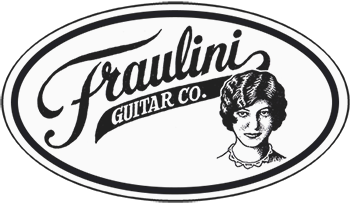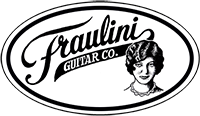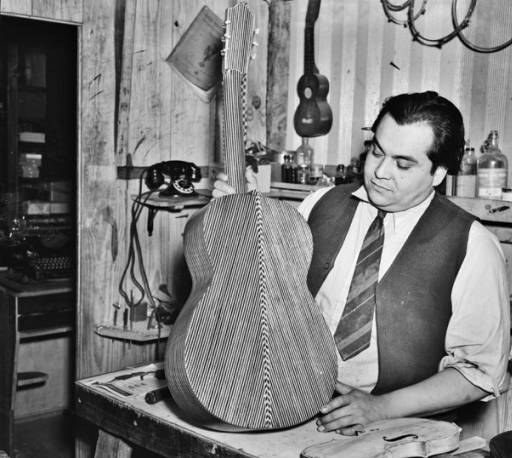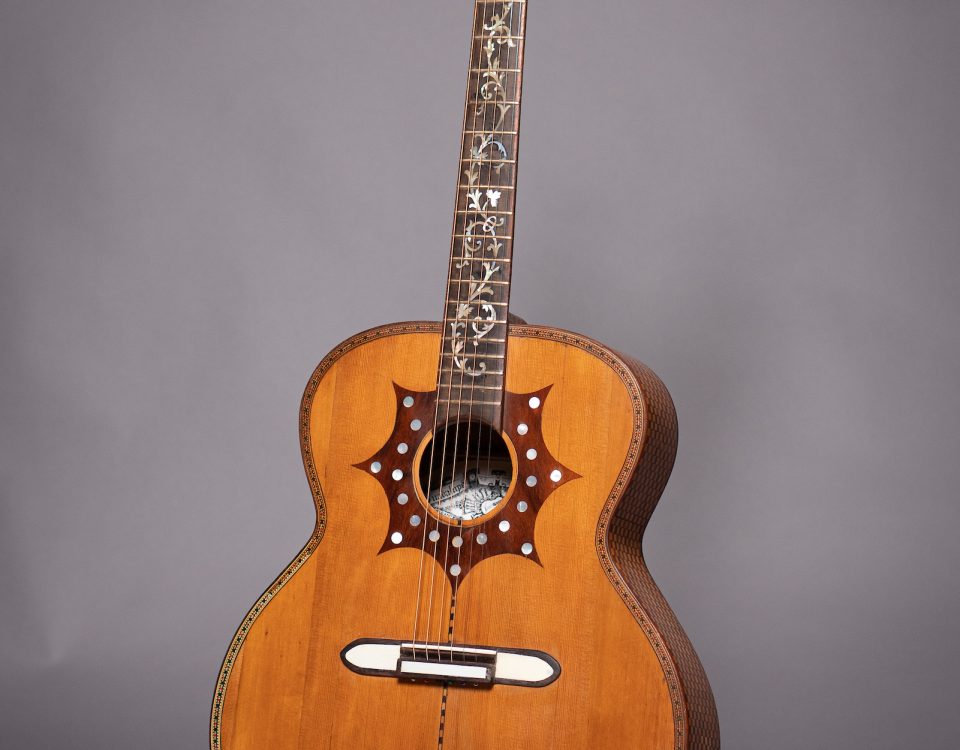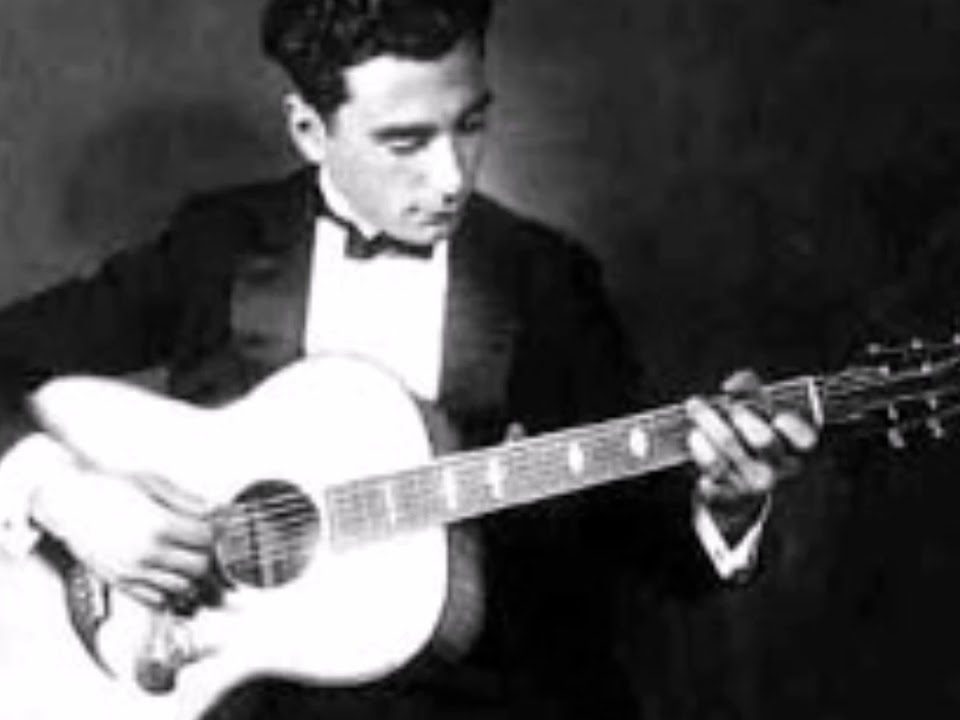Stoneman Auditorium Galiano

Eventful weekend
February 3, 2009
12 String Tailpiece
February 26, 2009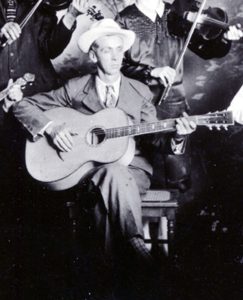 I mentioned the copy of Ernest Stoneman’s Galiano that I made, but realized that I haven’t explained the guitar yet. Here goes:
I mentioned the copy of Ernest Stoneman’s Galiano that I made, but realized that I haven’t explained the guitar yet. Here goes:
Ernest Stoneman was one of the earliest people to record country music. He came before the Carter Family and Jimmie Rodgers, and actually had a hand in setting up the legendary Bristol Sessions. Stoneman played guitar, autoharp and harmonica, he was a great singer and songwriter. His real gift was as a bandleader. Stoneman assembled the Blue Ridge Corn Shuckers and the Pilot Mountaineers, among others.
Besides being one of the pioneers of country music, my other fascination with Stoneman was his guitar, an Auditorium sized Galiano. I was first introduced to the guitar by Kirk Sutphin, who asked me if I had ever come across a similar one. That started five year search to figure out exactly what it was that Stoneman played.
Galiano was a brand name of guitar that was used by several builders, among them, Antonio Cerrito, Raphael Ciani, Giuseppe Nettuno and Antonio Grausso. The Oscar Schmidt company also made guitars under the Galiano name, but these guitar don’t differ much from the other stock models that they made. The guitar that I’ve played for the past ten years is actually an Oscar Schmidt made Galiano, which has a Galiano label pasted directly over a Stella label. I’m not sure where Galianos were marketed. Likely it is a generic name referring to the Gagliano family who made violins and mandolins in Naples, and was used much like the Stradivarius name was used on inexpensive violins.
Stoneman’s guitar was made by one of the smaller independent shops, most likely Antonio Cerrito’s or Raphael Ciani. The whereabouts of his actual guitar are unknown. His daughters told me varying reports, that it had been backed over by their car after forgetting to pack it after a gig, and that he sold it during the Depression. Hopefully it will someday surface.
In making a copy of the guitar I worked off of photos of Stoneman with the guitar and gained clues off of the different angles which he was holding the guitar in the photos. From the photos, I was able to deduce that the guitar had unstained maple or birch back and sides, a dark binding, probably rosewood, the same fingerboard inlays which were used on some of the fancier Galiano and Oscar Schmidt guitars, a bound fingerboard and headstock. I had many conversations about the guitar with ace remastering engineer and co producer of the Stoneman set, Chris King.
I also gained a lot of information from old guitars in making the copy. I had an Auditorium sized guitar made by Antonio Cerrito in my collection. I compared the measurements of this guitar with the guitar in the photo and came to the conclusion that, while the woods were different, they were nearly identical in size and shape. In determining which woods to use, I looked at several different Galiano, Cerrito and Ciani guitars. Maple, rather than birch, seemed to be the choice on some of the fancier guitars, along with a rosewood binding and a German spruce top. The fingerboard and bridge were ebony and I just needed to figure out the neck wood. I went with mahogany as it is more stable and much easier to carve than maple.
For some of the details of the guitar I had to use intuition. I had the patterns for the fingerboard inlays from some guitars in my collection and had worked them out for other guitars that I had made. I had a rough idea of what the purfling looked like, but I wasn’t able to find any that matched so I used something that had a similar motif, although it lacked the colors and intensity of the original stuff.
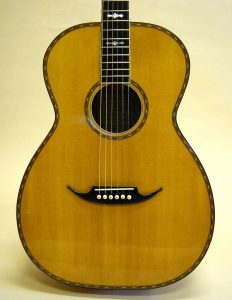 The very distinct bridge took a very long time to figure out. I did several sketches and tried to deduce the size and shape from proportional measurements taken from the photos of the guitar. It took a whole day of measuring, sketching, comparing, starting over, before I felt comfortable with the look of the bridge. it took another day to figure out how I was going to make it, and actually pull it off. I was so excited when I finally had the finished bridge in my hand and realized that I had nailed it. So excited that I fumbled the bridge, dropped it on the floor and the inlaid dots on the tips busted off. I was flabbergasted. I made a second bridge in a quarter of the time and was very careful in my handling of it. I finished the guitar with a very light French polish.
The very distinct bridge took a very long time to figure out. I did several sketches and tried to deduce the size and shape from proportional measurements taken from the photos of the guitar. It took a whole day of measuring, sketching, comparing, starting over, before I felt comfortable with the look of the bridge. it took another day to figure out how I was going to make it, and actually pull it off. I was so excited when I finally had the finished bridge in my hand and realized that I had nailed it. So excited that I fumbled the bridge, dropped it on the floor and the inlaid dots on the tips busted off. I was flabbergasted. I made a second bridge in a quarter of the time and was very careful in my handling of it. I finished the guitar with a very light French polish.
The finished product was really extraordinary. One of the best guitars that I’ve made. It had an extremely well balanced sound from the treble to the bass, with a nice depth to the tone. It was loud but still managed to maintain the clarity and dry sound that old guitars have. My friend Smitty became the lucky owner of the guitar and has been loving it ever since.
